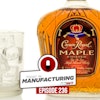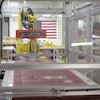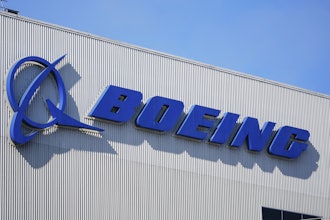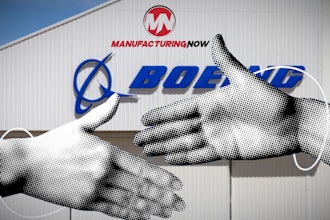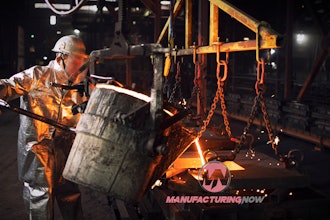In today's competitive global food market, process manufacturers search for effective ways to increase profitability and reduce costs in the face of mounting customer service and pricing pressures. The challenge to create competitive advantages and boost profits without unnecessary risk extends throughout a supply chain that can sometimes circle the globe. Trends toward retailer specific, organic or allergen-free products further complicate this scenario.
By accurately assessing demand, controlling inventory, and improving success rates of new products, food manufacturers can achieve an enviable competitive status.
To effectively execute these three critical activities, food manufacturers need tools that help forecast demand, meet service level agreements (SLA) with less inventory, decrease the cost to serve, ensure regulatory compliance, reduce the time to market and support the growing emphasis on collaboration between manufacturers and their retail, supply, and technology partners.
Assessing & responding to demand
As food manufacturers seek competitive advantages, accurate demand forecasts become a critical piece of the customer service puzzle, as well as a way to reduce inventory costs. Too little product leads to stock outages, while too much can require the use of promotions and discounts to move inventory or risk having it returned to the manufacturer. In either scenario, the retailer or customer is not happy.
Today's food retailers are larger and more powerful than ever before, controlling distribution channels and benchmarking manufacturers against each other based on service level agreements and profit. Performance is key, but when working with multiple retailers, it is important for manufacturers to focus efforts on those channels with the potential to garner the most profit. Collaborating with these key customers to replenish staples and coordinate promotions to drive consumer traffic and improve new product introduction is a win-win scenario.
To accurately forecast demand in this dynamic environment, food manufacturers need a demand planning solution that can take into account multiple considerations and forecast what products will be sold over various time horizons, while pinpointing channels with the most profit potential. The situation is much too complex for on-the-fly spreadsheet analysis and requires powerful algorithms that can perform trade-off analysis. The solution should take into account variables like seasonality, promotions, competitive responses and various cost, profit or inventory situations to provide multiple scenarios for the manufacturer to choose from.
For example, a manufacturer might easily conclude that the demand plan with the lowest total cost of manufacturing would not be most profitable. However, the ability to assess multiple trade-off scenarios like lowest inventory or supply costs results in the most profitable plan with the lowest possible risk.
The ability to continually forecast demand accurately also allows the manufacturer to better predict inventory. A two percent increase in demand forecast accuracy could lead to a one percent inventory improvement.
Managing inventory & assets
Once a manufacturer understands which channels are most profitable for its food products, it must ensure that it can meet this demand in a timely manner with lowest possible inventory and risk. Minimizing inventory, while improving perfect order rates, is critical to reducing the cost to serve.
Balancing inventory for various products at multiple locations with numerous customer requirements, as well as varying shelf life and promotions, is a complex process. Many times, traditional planning tools are unable to isolate the most profitable solution from this juggling act. Instead, manufacturers in this environment need the ability to accurately model the unique advantages and constraints of their own supply chain.
To optimize inventory, manufacturers must also have a handle on which assets can produce and distribute products at the lowest cost. While a plant in Michigan might make specialty breads at the lowest cost, the delivery cost to Maryland would more than offset its production cost advantage over a plant in Pennsylvania. Food manufacturing trends, such as domestic or international outsourcing of lower-end products that focus a company on differentiated, value-added products further complicate this cost scenario. An accurate inventory model will also account for distribution concerns, such as local shipping by normal truck versus long distance shipping with refrigeration and a tollers or co-packers capable to promise ability.
Inventory levels have a major impact on profitability, but keeping them too low risks the ability for response to critical service level agreements and jeopardizes customer relationships. However, with inventory optimization strategies in place, research has shown that most companies can meet the agreements with 10 percent less finished goods.
Building broader markets
In today's food markets, focusing on key customers through advanced demand planning and serving them more efficiently with inventory optimization are not enough to guarantee profit growth. Food retailers are faced with everything from shifting nutritional regulations, as with trans-fats, to consumer demands for organic products or those produced in a socially responsible manner. In response, food manufactures must be ready to collaborate with both retailers and suppliers to quickly bring quality, compliant products to consumers.
Portfolio management has become increasingly important as sophisticated retailers weed out slow moving or lower profit items. Major consumer goods companies continually rationalize marginal products in favor of newer products with more profit potential. New flavors and sizes are meant to tantalize customers, and success often hinges on a simple tweak of a current product or new packaging if research and development (R&D) is properly focused and equipped with the necessary tools.
Food manufacturers are responding to this trend. However, close collaboration with food retailers is key to developing the right product and introducing it at the right time. Such collaboration can lead to increased cash flow, and also ensures better shelf placement, improved finished goods turns and lower retailer costs. In fact, many CEOs are now mandating higher levels of collaboration, both internally and externally, to enhance internal R&D capabilities, reduce lead times, improve quality and ensure profitability.
For effective R&D activities to support these collaborative goals, food manufacturers need product lifecycle management (PLM) tools that can help identify and mitigate risk before time and money are lost. At any stage of product development, such tools should be able to validate target specifications, projected completion dates, product and project costs, as well as regulatory restrictions by market and best practices guidelines. They should also quickly assess marketability impacts from design and specification changes or disruptive events so that R&D stays focused on the best opportunities.
Collaboration with retailers is critical in R&D, but sourcing of materials is an equally important aspect of product development, with potential ramifications for cost, delivery, safety, and regulatory compliance, especially in global markets. Choosing a supplier simply by cost is risky. In addition to cost, PLM take into account metrics such as a supplier's capability matrix rating, social responsibility, sustainability index, quality rating, preference status, compliance risk, and readiness values.
It only takes a moment to recall recent, serious problems with sourcing, such as the melamine in dog food, lead in toys, and e-coli in packaged spinach products. Such debacles are devastating to consumer and retailer confidence, but PLM can mitigate these dangers by helping identify the best and safest sustainable source of materials.
Compliance issues are especially important as many food manufacturers seek to differentiate themselves with value-added products such as, for example, antibiotic-free milk, organic produce, or hypoallergenic gluten-free bread. The challenge of compliance, however, traverses not only a food manufacturer's supply chain, but also those of it suppliers', solidifying the importance of a software solution that tracks this performance.
Overall, PLM can help food manufactures assess risk, whether early in the R&D cycle or later on, as it relates to a variety of factors, including consumer demand, compliance and quality. It also supports the ability to feed back adjustments into the cycle so that lead times are not impacted. The net result for food manufacturers is reduced time to market and reduced costs.


